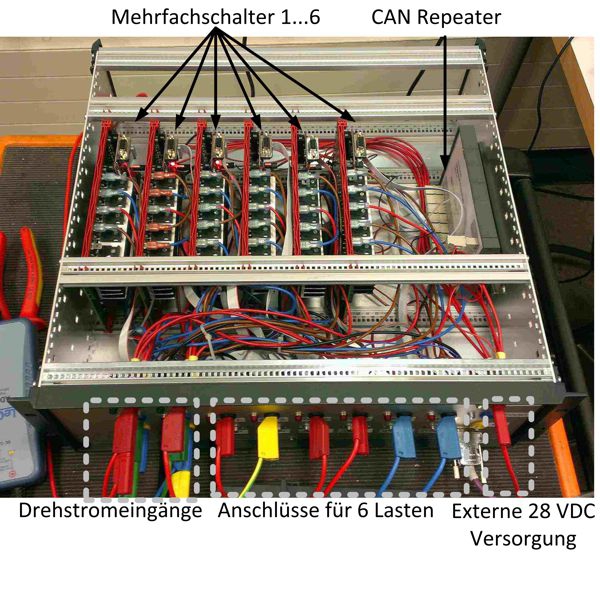State of the art in electrical power systems in aircraft is a power management, which allows to install loads with a higher power demand than the cable is able to deliver. To protect the cable in times of high power demand loads are shut off. The load balancing instead is able to distribute the loads in such a way that the cables are better utilized. Thereby, loads are switched over from a high utilized feeder to a low utilized feeder. The use of cable capacity and the load availability is increased.
Load balancing switches three-phase loads between different power feeders and single-phase loads between different phases of a feeder. A goal is the reduction of the neutral current. Also the maximum appearing current, which is the sizing current for the power feeders, can be reduced. To verify the theoretical analysis of different load balancing approaches in modern aircraft, a demonstrator has to be built. Since the project ACAPONE focused on optimizing three-phase feeders and the project FlexKab aimed at optimizing the whole network, including DC power feeders, this project focuses on the hardware development for a switching node.

Contact partner:
Prof. Dr.-Ing. habil. Detlef Schulz (project manager)
Department of Electrical Engineering
Electrical Power Systems
Letzte Änderung: 28. May 2021
